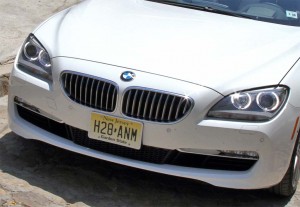While it’s probably not the end of the world some might see another sign of the apocalypse in BMW’s apparent plan to introduce its first front-wheel-drive model at the upcoming Paris Motor Show.
The new offering will bear the badge of a 1-Series GT and is reportedly going to share the same platform as the next-generation Mini, according to our friends at Autoblog and Britain’s Autocar.
Other sources suggest it will also be dubbed the new Compact Activity Tourer, or CAV, reflecting its tall, crossover-like shape. It would complement, rather than replace the new X1 Sport Activity Vehicle, or SAV. It’s expected to feature a higher seating position than other 1-Series models, much like BMW’s current 5-Series GT.
The new 1-er GT is apparently being developed to compete with the latest-generation Mercedes-Benz B-Class line.
BMW Chairman Norbert Reithof first signaled the possibility of a front-driver back in 2010 and the upcoming update of the Mini was a perfect opportunity. Like all automakers, BMW is intent on improving its economies of scale by sharing components wherever possible. Nonetheless, purists were hoping the maker would back away from that strategy and retain its focus on rear- or all-wheel-drive across the line-up.
For the moment, it appears there are no other models coming with torque spinning exclusively through the front tires. The rest of the 1-Series is expected to remain rear-driven.
The current plan is to power the 1-Series GT with several different engines – including a turbocharged 1.5-liter 3-cylinder gas engine that also will be shared with the Mini – as well as a 4-cylinder gas powerplant from the BMW toolkit.
Plans call for the GT to reach European showrooms in 2014. Whether BMW will bring the GT to the States is uncertain but the maker is showing an interest in expanding its line-up in all key markets. American motorists will see at least some of the other 1-Series offerings, however.


The end of the world as we know it? Hardly.
While the classic front-engine, rear-wheel-drive layout has been a BMW staple since the 2002, through the E21, E30, E36 and E46, it is a design that is, well, nearly fifty years old.
(And that is one thing about BMWs, if you’ve worked on one, you feel very familiar working on other models – they all follow the same design philosophy. The cars are a joy to work on, although I wish I didn’t have to do it so much.)
And while this classic drivetrain may still be around in the 3-, 5-, and 7-series, one could understand why it might make sense to use a FWD platform in a smaller 1-series BMW, at least in this specialized “GT” model (a 318ti for the 2010’s?)
The current 1-series has the same drivetrain wedged into it as the 3- and 5-series. This does mean you can buy the same 300 HP twin-turbo six int the tiny car, making for a pocket-rocket. But for most people, such a car is not really what they are looking for, in terms of practical transportation, particularly in Europe.
BMW is the most profitable car company on the planet, and pays a lovely little dividend every year (and the stock price has done nicely as well). And they have done this by making unique cars people want to buy.
So, while the Automotive Engineer in me may be somewhat alarmed by this trend, I can understand the economics and practicality of it. They know what they are doing – and what the market wants, even if it not what I want.
Of course, I am not about to trade-in the M Roadster for one of these FWD cars anytime soon. And I suspect, that BMW NA dealers will fight any attempt to bring the car in to the US, as it will degrade the “halo” effect on the overall line. These same dealers successfully fought to keep four-cylinder models (and diesels, until recently) out of the lineup as well.
Hmmm, Robert,
So, did the dealers help or hurt by resisting I-4s and diesels for so long? I’d argue that was a wrong-headed move on their part.
Me, personally? I’d love to see the new M550dX come to the States.
Paul A. Eisenstein
Publisher, TheDetroitBureau.com